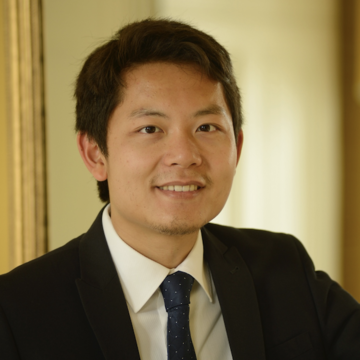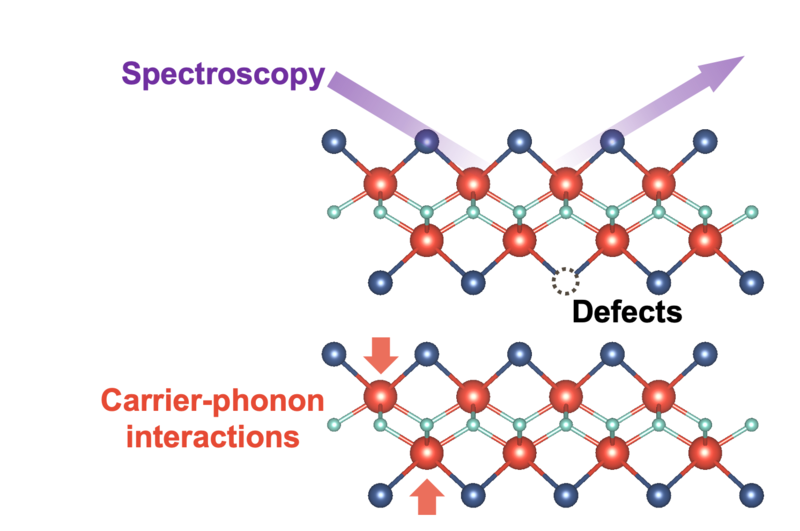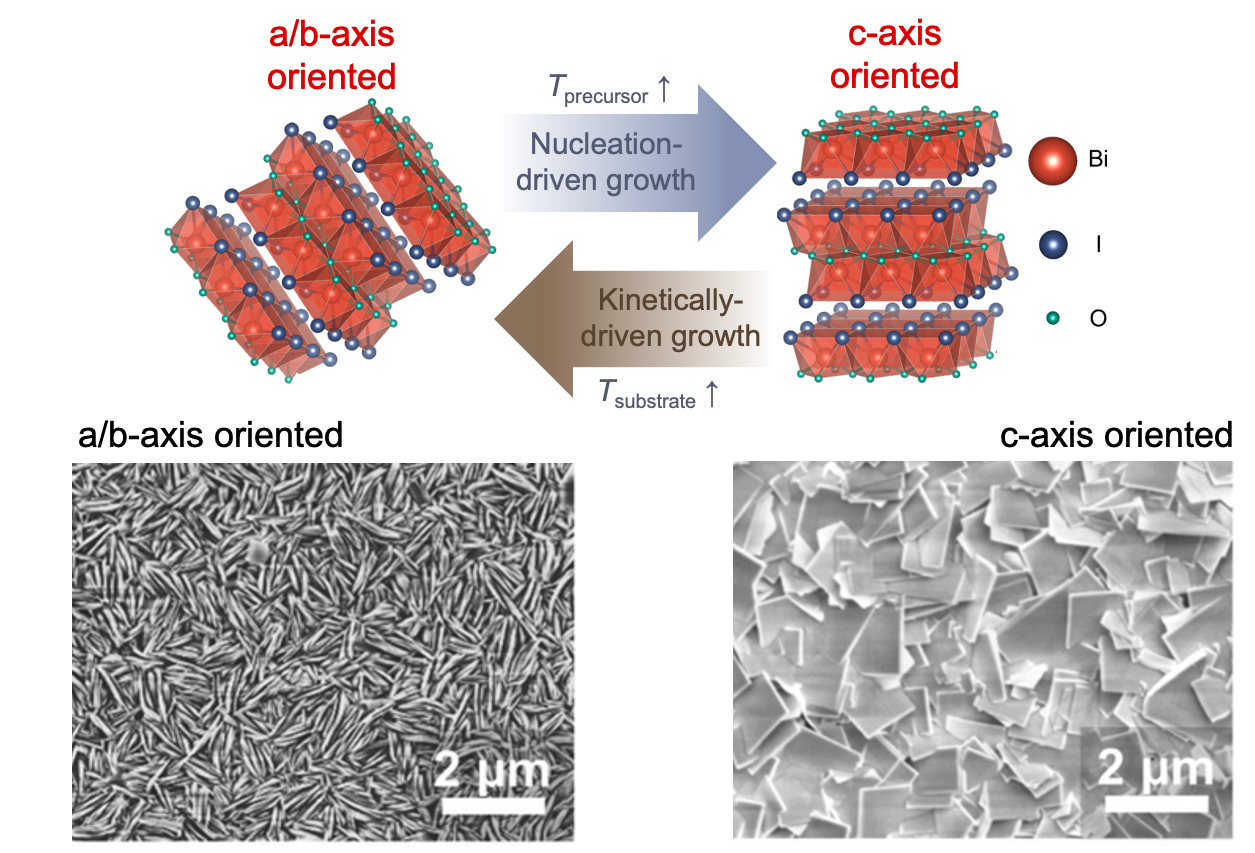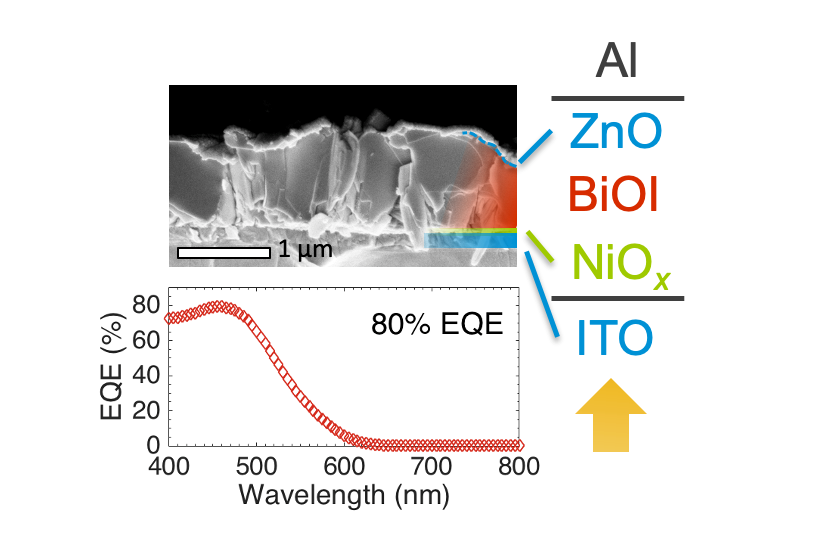Robert Hoye

Professor Robert Hoye
Associate Professor of Inorganic Chemistry
STFC-RAEng Senior Research Fellow
Our vision is to develop a new generation of energy materials that can tolerate defects to achieve efficient performance when grown by cost-effective, scalable synthetic approaches. We are an interdisciplinary team, with interests spanning from creating new fundamental insights into carrier-matter interactions, through to applying this understanding to develop high-performing devices for clean energy conversion. Our research is experimentally focussed, but we have strong collaborations with theory groups.
Perovskite-Inspired Materials
Defects are ubiquitous in materials, and, historically, efforts at mitigating their deleterious effects have focussed on expensive, high-temperature methods to minimise defect densities. The more recent development of lead-halide perovskites in photovoltaics has brought to the fore the concept of ‘defect-tolerance’, in which efficient performance can still be achieved despite high defect densities being present. Our focus is on developing broader classes of materials that can mimic this defect tolerance, especially in sustainable materials with nontoxic elements. These have included bismuth-based perovskites, chalcohalides and chalcogenides.
We study the interplay between crystal and electronic structure, and the effects of defects and carrier-phonon interactions on charge-carrier transport in these materials, utilising a range of advanced techniques, including ultrafast spectroscopy, photoemission spectroscopy and atom probe tomography.

- Strong Absorption and Ultrafast Localisation in NaBiS2 Nanocrystals with Slow Charge-Carrier Recombination [Nature Communications, 2022]
- The Defect Challenge of Wide-Bandgap Semiconductors for Photovoltaics and Beyond [Nature Communications, 2022]
- Strongly Enhanced Photovoltaic Performance and Defect Physics of Air-Stable Bismuth Oxyiodide (BiOI) [Advanced Materials, 2017]
Optoelectronic Materials Development
We have devised a range of solution- and vapour-based methods for synthesising high-quality nanocrystals, thin films and single crystals of novel materials. These include chemical vapour transport, spatial atomic layer deposition, and ligand-assisted reprecipitation of nanoplatelets with controlled thickness. We focus on scalable and sustainable synthetic approaches, as well as gaining insights into the mechanistic steps involved (e.g., influence of antisolvent polarity on nanocrystal surface chemistry).

• Elucidating the Role of Antisolvents on the Surface Chemistry and Optoelectronic Properties of CsPbBrxI3-x [JACS, 2022]
• Rapid Vapor-Phase Deposition of High-Mobility p-Type Buffer Layers on Perovskite Photovoltaics for Efficient Semitransparent Devices [ACS Energy Letters, 2020]
Deriving Functionality from New Materials
Through careful control over bulk properties and interfaces, we have assembled complex structures to derive functionality from new materials, with applications spanning from photovoltaics, photoelectrochemical cells, light-emitting diodes and radiation detectors.

• Long-Term Solar Water and CO2 Splitting with Photoelectrochemical BiOI-BiVO4 Tandems [Nature Materials, 2022]
• Pressing Challenges in Halide Perovskite Photovoltaics – From the Atomic to Module Level [Joule, 2021]
Robert Hoye is an Associate Professor of Inorganic Chemistry, and Tutorial Fellow at St. John’s College.
He obtained his first degree from the University of Auckland (New Zealand), and was awarded a Cambridge-Rutherford Memorial scholarship to pursue a PhD at the University of Cambridge (2012-2014), working with Judith Driscoll.
He subsequently took up a postdoctoral position at the Massachusetts Institute of Technology, working with Tonio Buonassisi on developing defect tolerant semiconductors, as well as perovskite-silicon tandem photovoltaics.
Afterwards, in 2016, Hoye returned to the University of Cambridge to become an independent Research Fellow, supported by Magdalene College and hosted by Prof. Sir Richard Friend. There, he worked on ultrafast spectroscopy and optoelectronic device development of novel metal-halide semiconductors, including halide elpasolites and perovskite nanoplatelets.
In 2018, Hoye became an independent Principal Investigator through the Royal Academy of Engineering Research Fellowship, and in 2019 he became a Fellow of Downing College Cambridge, where he was the inaugural Silverman Research Fellow. Hoye explored the use of BiOI for applications beyond photovoltaics, including photoelectrochemical cells, which was recently published in Nature Materials.
Overall, in the 4 years Hoye was in Cambridge as a Research Fellow, he supervised 9 PhD students, 5 of whom have already graduated and are now working at Imperial College, ASML, McKinsey and a display startup.
In 2020, Hoye took up a permanent academic position (Lectureship) at Imperial College London. During this time, he pushed beyond the halide compounds in the exploration of perovskite-inspired materials, and focussed on understanding the effects of carrier-phonon coupling. His group also worked on indoor photovoltaics, luminescent nanosystems, radiation detectors and gas sensors. In mid-2022, Hoye was promoted to Senior Lecturer.
Hoye moved to his current positions in Oxford on October 2022. He has been awarded several prizes, including the Imperial President’s Award for Outstanding Early Career Researcher (2021) and the Rosenhain Medal and Prize (2021) by the Institute of Materials, Minerals and Mining. He was awarded an ERC Starting Grant in 2021 (now funded by UKRI).




